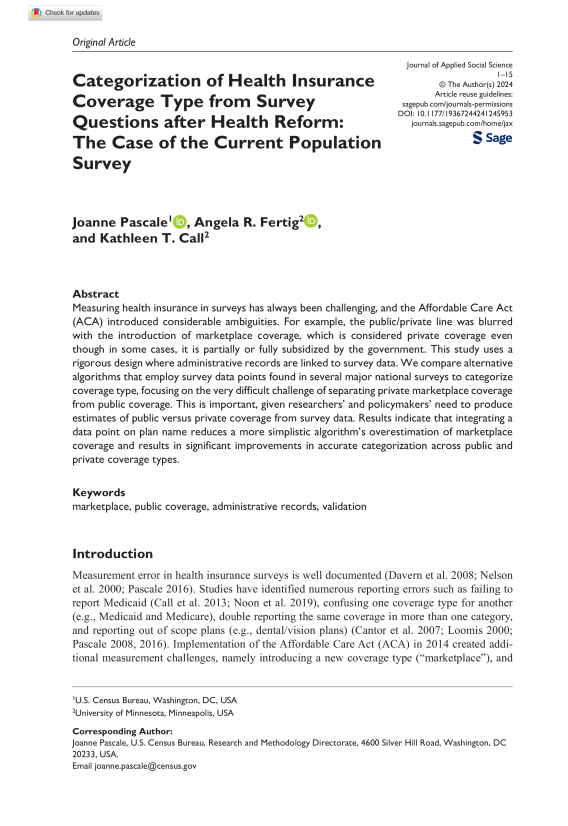This article, coauthored by SHADAC Investigator Kathleen Call alongside colleagues from the Humphrey School of Public Affairs Angela Fertig and U.S. Census Bureau Joanne Pascale, used administrative records linked with survey data to explore how to categorize private marketplace coverage versus public coverage in the redesigned Current Population Survey (CPS) health insurance module.

To begin, using data from an experimental study called Comparing Health Insurance Measurement Error (CHIME) two algorithms were created.
The second algorithm, dubbed 'AR', classifies coverage type by leveraging survey responses matched to administrative records from a private health insurer.
The two algorithms were then compared by examining three reporting accuracy metrics of coverage type classification: underreporting, overreporting, and prevalence. Then, they used the results to assess whether the AR algorithm improved, or could improve, the accurate categorization of private versus public coverage on the CPS.
Principal Findings
This study’s findings show that the AR algorithm produced measurable improvements over the CON algorithm, with only one minor trade-off. Underreporting of public coverage was reduced by about 5 percentage points, and overreporting of private, marketplace, and nongroup/marketplace coverage was reduced (by almost 2 percentage points; almost 7 percentage points; and almost 11 percentage points, respectively).
The cost of these improved metrics was higher underreporting of marketplace and nongroup/marketplace coverage.
However, because one of the main goals and motivations for this research project was to address the problem of the chronic underreporting of public coverage, researchers suggest that the trade off to improve reporting of public coverage with a cost of underreporting marketplace coverage (that has relatively low prevalence) might be acceptable.
To read the full article, visit this link.
